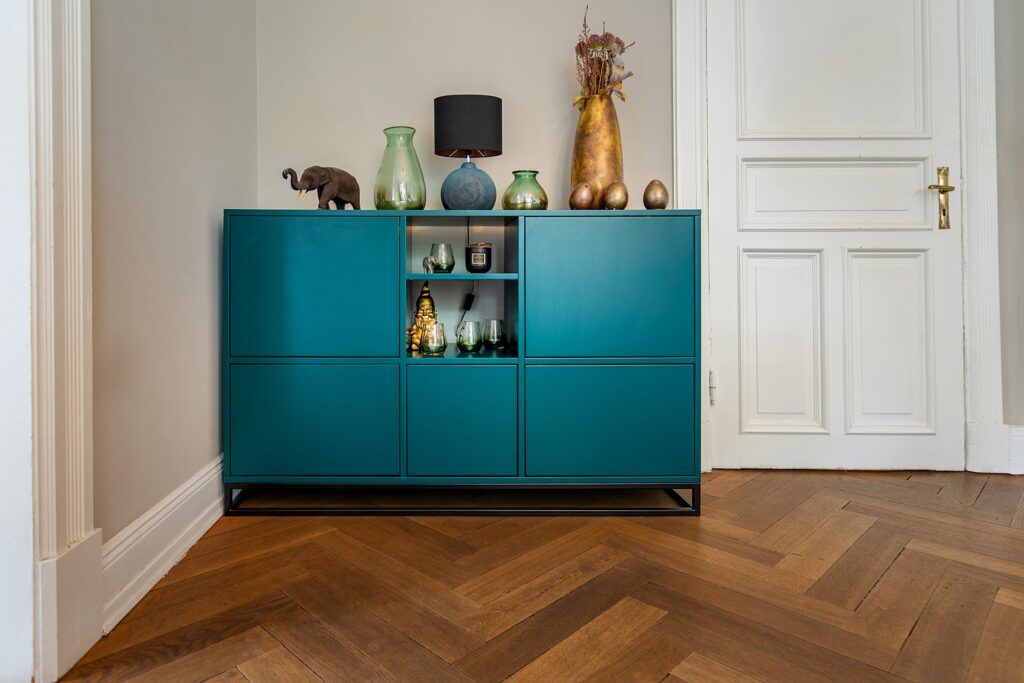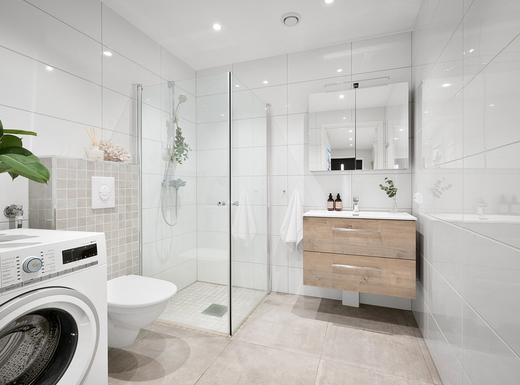Stained cabinets add warmth, character, and elegance to any kitchen or bathroom, but maintaining their pristine appearance requires regular care and attention. Thanks to the internet, homeowners can learn how to stain cabinets. Whether you have wooden, laminate, or veneer cabinets, proper maintenance is vital to preserve their beauty and extend their lifespan. Below are different tips and techniques for stain cabinet maintenance to keep your cabinets looking great for years to come.
Avoid Harsh Chemicals
 When cleaning damaged cabinets, avoid using strong chemicals, solvents, or abrasive cleansers that may harm the finish or remove the stain. Choose soft, non-abrasive cleaning solutions designed for wood or laminate surfaces. Natural cleaning options, such as vinegar and water or mild dish soap diluted in water, are both safe and efficient in removing dirt and grime from discolored cabinets.
When cleaning damaged cabinets, avoid using strong chemicals, solvents, or abrasive cleansers that may harm the finish or remove the stain. Choose soft, non-abrasive cleaning solutions designed for wood or laminate surfaces. Natural cleaning options, such as vinegar and water or mild dish soap diluted in water, are both safe and efficient in removing dirt and grime from discolored cabinets.
Protect Against Moisture
Moisture is the enemy of stained cabinets, as it can cause warping, swelling, and discoloration of the wood or veneer. To protect against moisture damage, avoid placing hot or wet items directly on cabinet surfaces, such as hot pots and pans, wet towels, or spills. Use coasters, trivets, and placemats to provide a protective barrier between hot or wet items and cabinet surfaces, minimizing the risk of damage.
Use Furniture Polish or Wax
Applying furniture polish or wax periodically can help nourish and protect the wood or veneer finish of stained cabinets, enhancing their luster and resilience. Choose a high-quality furniture polish or wax specifically designed for wood surfaces and follow the manufacturer’s instructions for application. Apply a thin, even coat of polish or wax using a soft cloth, then buff gently to restore shine and create a protective barrier against moisture and dirt.
Repair Minor Damage Promptly
Minor scratches, nicks, or dents in stained cabinets can detract from their appearance over time. To keep your cabinets looking great, address minor damage promptly by applying touch-up stain or filler to conceal imperfections. Choose a stain or filler that matches the color and finish of your cabinets, then apply it carefully to the damaged area using a small brush or cotton swab. Allow the stain or filler to dry completely before blending it in with the surrounding surface using fine-grit sandpaper or a soft cloth.
Practice Preventive Maintenance
Routinely inspect cabinet hardware, such as hinges, knobs, and handles, to ensure they are secure and functioning properly. Tighten loose screws or replace damaged hardware as needed to prevent further damage or wear. Additionally, consider applying felt pads or bumpers to the underside of cabinet doors and drawers to prevent them from slamming shut and causing damage to the finish.
Professional Refinishing
If your stained cabinets show signs of extensive wear, fading, or damage that cannot be addressed through routine maintenance, consider professional refinishing or re-staining. A professional refinisher can sand down the existing finish, repair any damage, and apply a fresh coat of stain or sealant to restore the cabinets to their original beauty. Professional refinishing can breathe new life into tired cabinets and extend their lifespan for years to come.
Conclusion
 Stain cabinet maintenance is essential for preserving the beauty, durability, and longevity of your cabinets. By following these key suggestions and practices, you can keep your stained cabinets looking wonderful while also improving the overall visual appeal of your kitchen or bathroom. With regular cleaning, sensitive maintenance, and rapid treatment of any damage, you may enjoy the timeless elegance of stained cabinets for many years to come.
Stain cabinet maintenance is essential for preserving the beauty, durability, and longevity of your cabinets. By following these key suggestions and practices, you can keep your stained cabinets looking wonderful while also improving the overall visual appeal of your kitchen or bathroom. With regular cleaning, sensitive maintenance, and rapid treatment of any damage, you may enjoy the timeless elegance of stained cabinets for many years to come.




